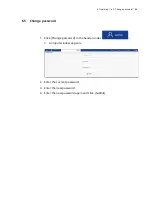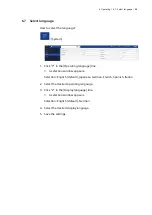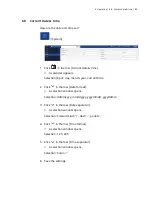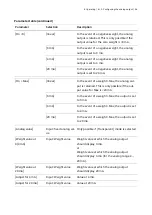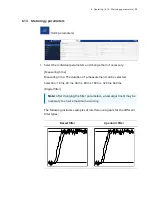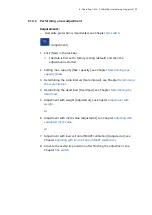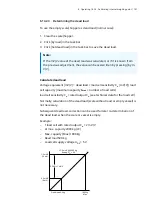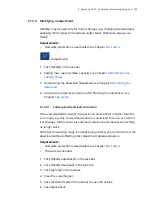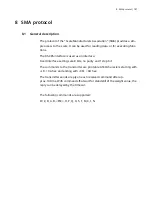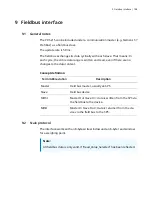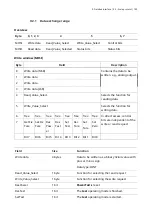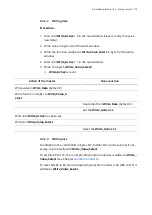
6. Operating | 6.14 - Calibrating internal weighing point | 100
6.14.2.1 Determining max. capacity (Max)
The max. capacity (Max) determines the max. weight without dead load of
the weight to be measured and the displayed number of digits behind the
decimal point. Normally, Max is less than the load cell capacity (max. capacity
of load cell × number of load cells).
Permissible values for the max. capacity are:
Max weight value from 0.00010 to 999999 in t, kg, g, or lb.
Maximum weight value must be an integer multiple of the scale interval (d).
It may have up to 6 digits and is entered as a numeric value with or without a
decimal point.
1. Under [Max. capacity] enter max. capacity with decimal places (in this
example: 6000) and select the mass unit (in this example: g).
2. Click [Set max. capacity] in the task bar to save the entries.
6.14.2.2 Determining the scale interval
The scale interval (d) is the difference between two successive display values.
Example:
Max. capacity (Max) = 6000 g
Scale interval (d) = 2 g
Calculation for scale interval for max. capacity (Max) (automatic):
d = Max/Scale interval
d = 6000 g/2 g
d = 3000
The mass unit is taken from [Max. capacity]. The number of digits behind
the decimal point is also automatically determined when [Max. capacity]
is entered.
1. Under [Scale interval] select "2".
2. Click [Set scale interval] in the task bar to save the entries.
The max. capacity (Max) and the scale interval are displayed in the
header in the weighing point/metrology area.

